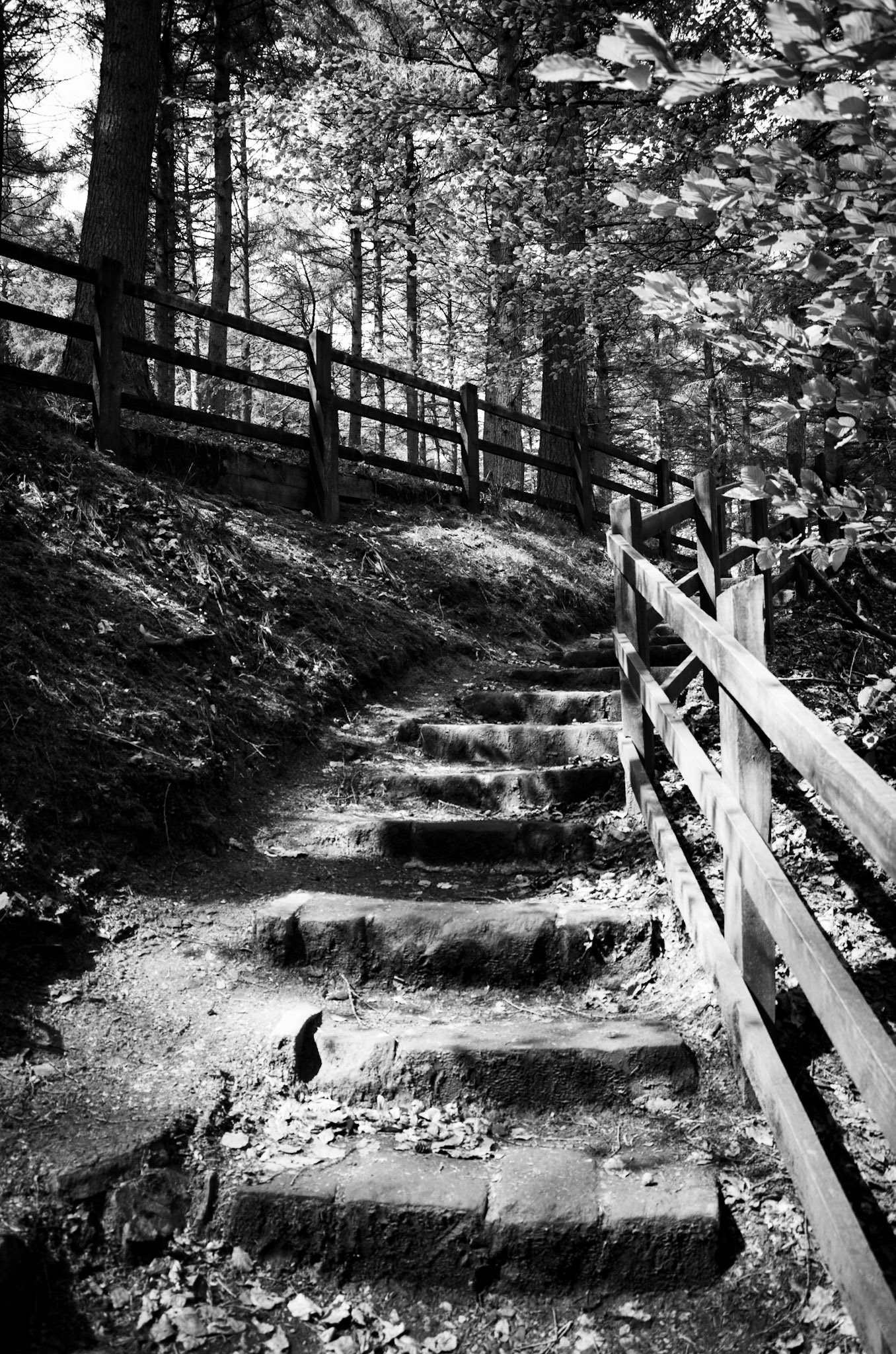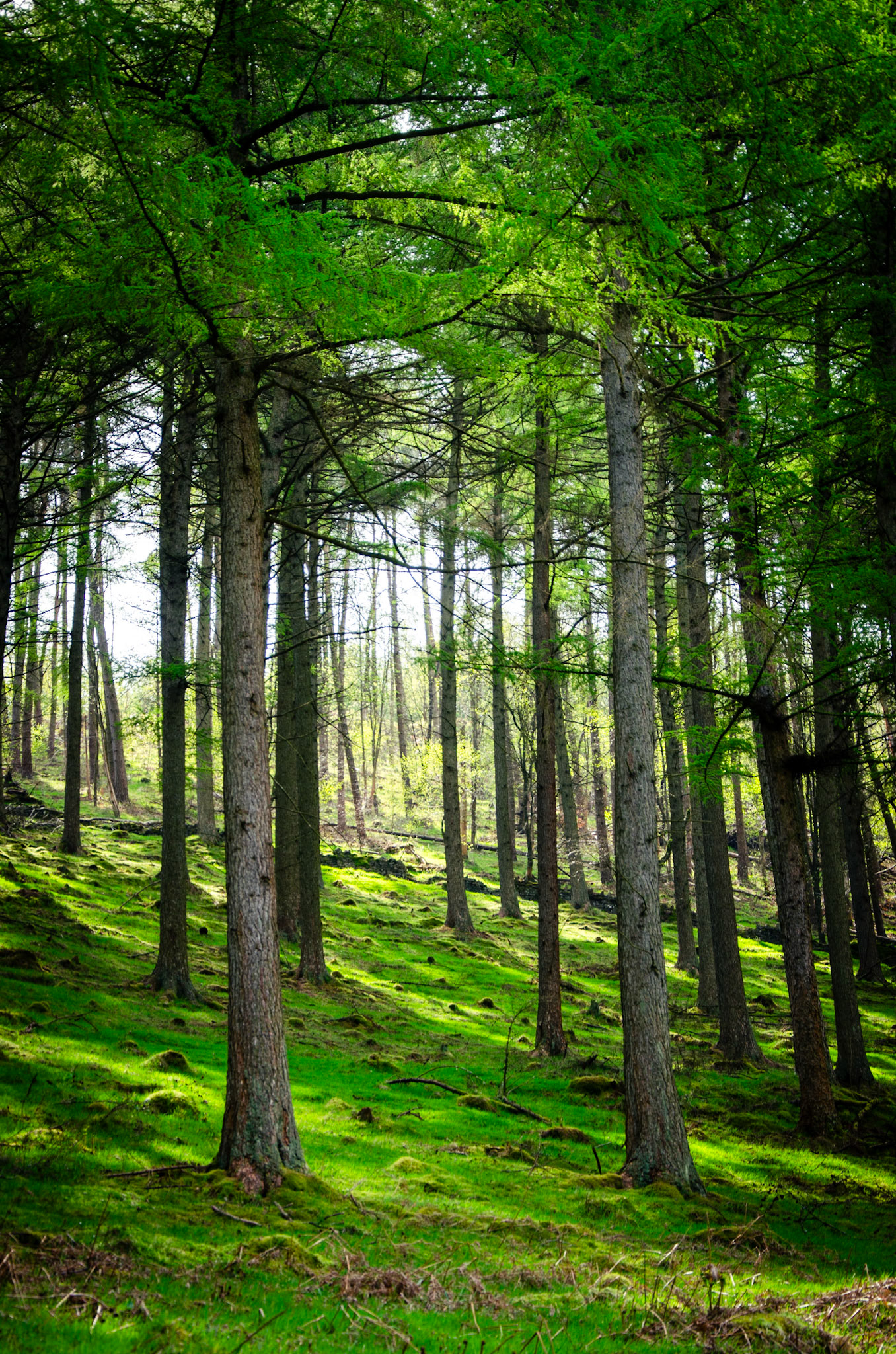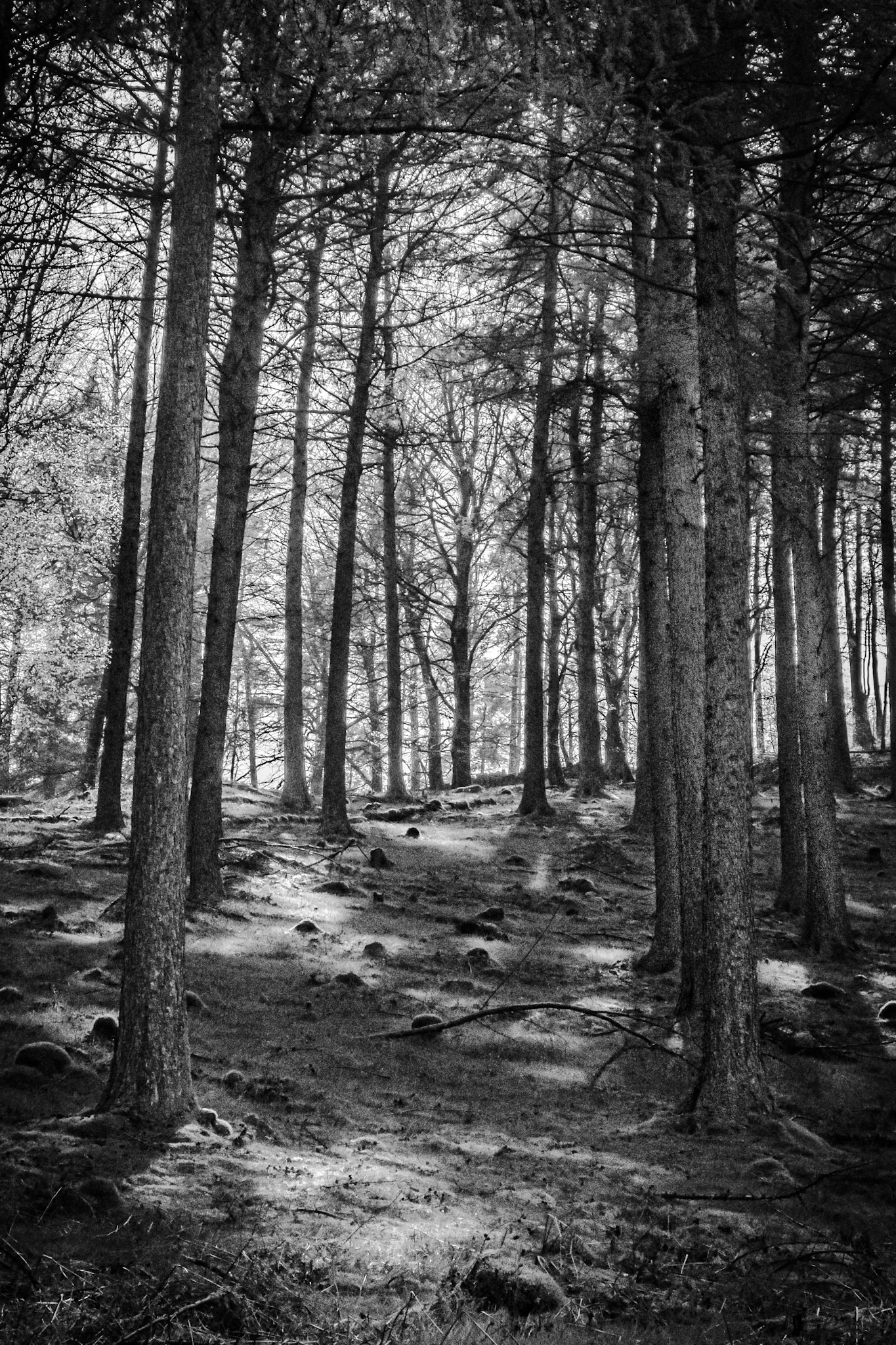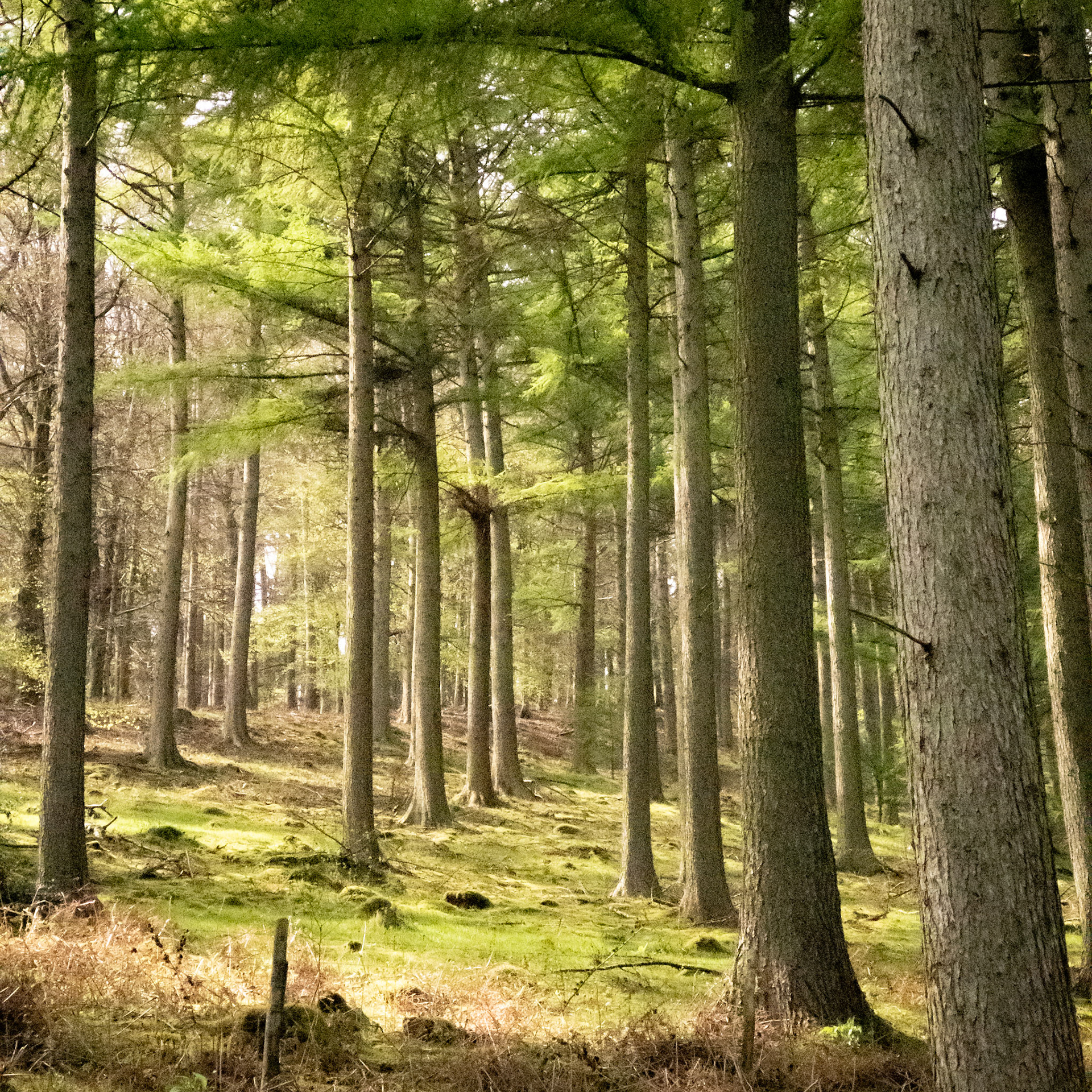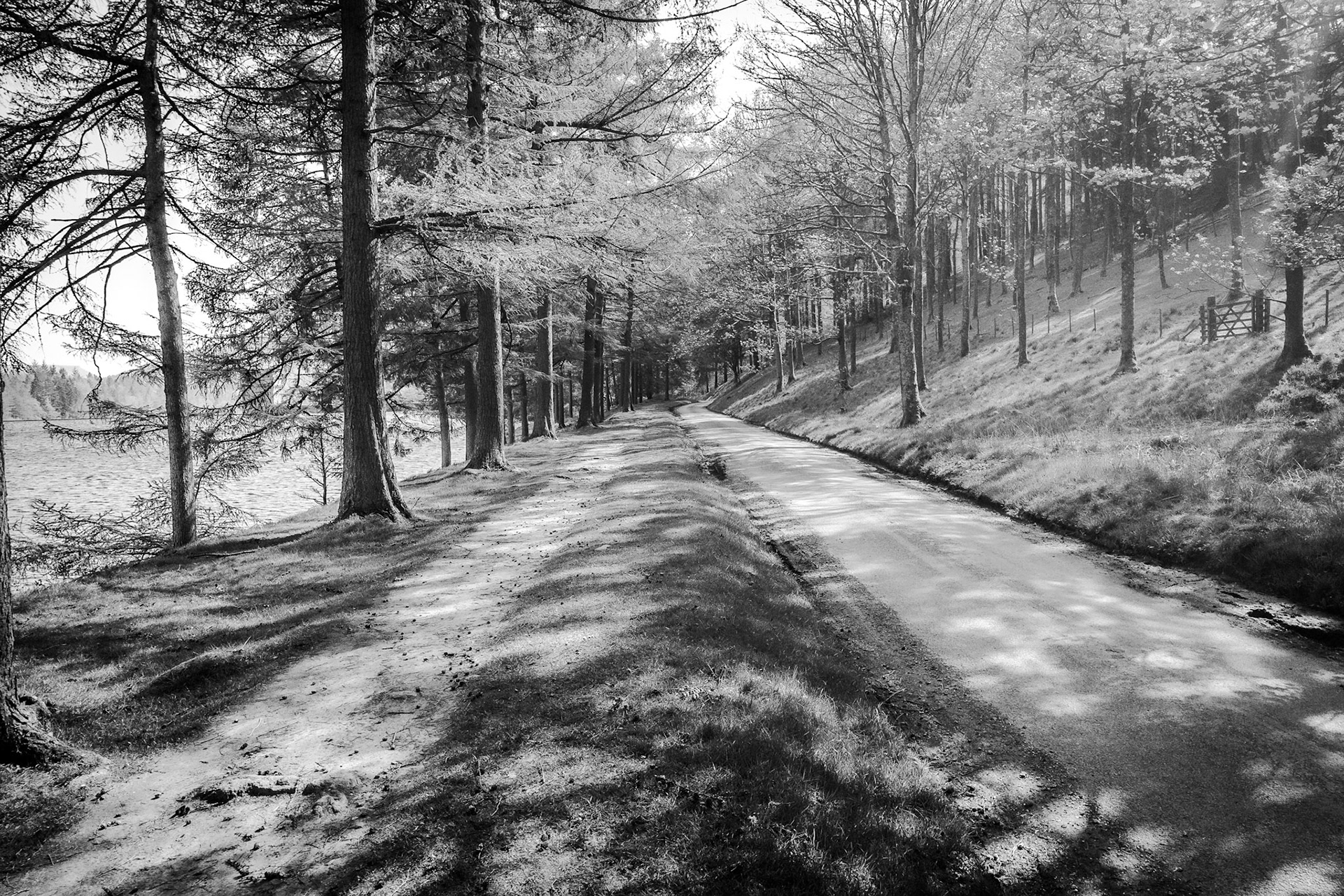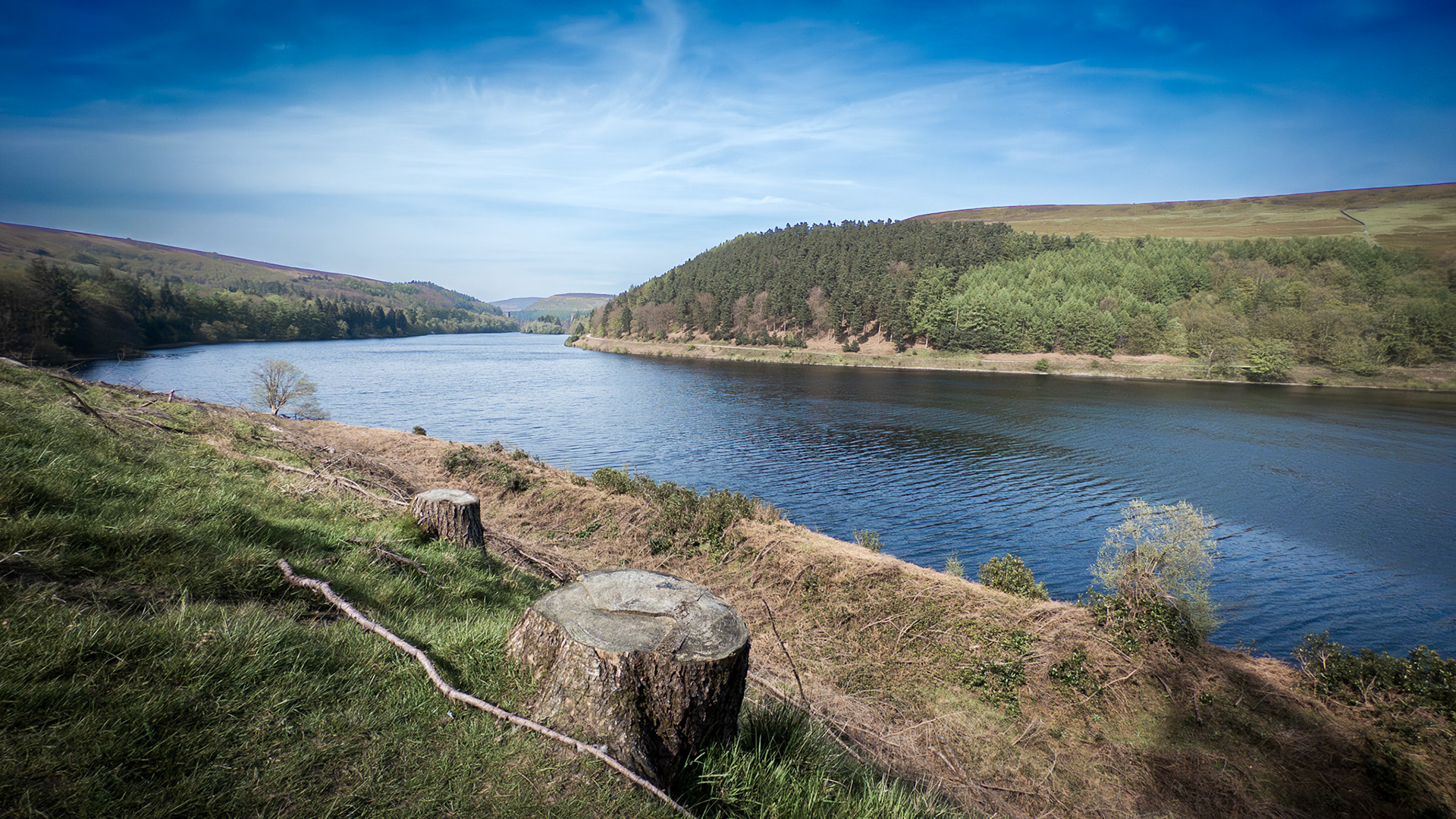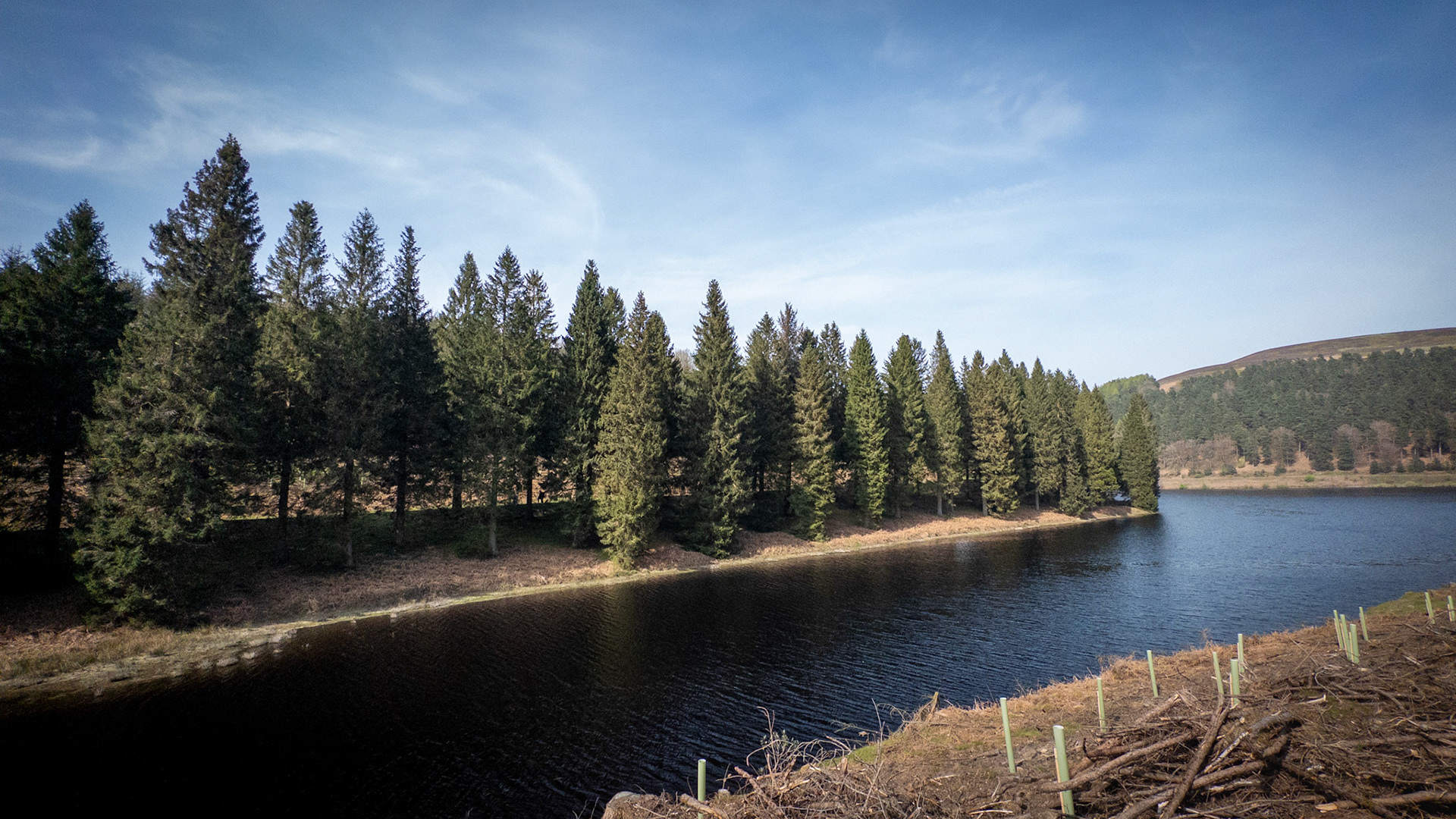My landscape photography setup. The Nikon D7000 mounted on a travel tripod with a standard ruck sack hanging for extra stability during the longer exposure time.
Instead of just snapping and hoping for the best, I’ve become more calculated with my composition. I’ve slowed down and used the tripod more for the landscape shots in these recent images. This has allowed me to carefully compose the scene, consider what should be in the frame, and, importantly, what shouldn’t. It has also given me the opportunity to go more manual with my camera settings, taking the time to work out the correct exposure instead of relying on auto settings all the time. Additionally, this slower approach has allowed me to use my big stopper—a 10-stop ND filter—which helps blur water and any movement in the frame.
I’ve come down to Derwent Water. It’s spring but I can only stay from midday through the afternoon, so unfortunately, I won’t be able to stay for sunset. Disappointingly, the lighting wasn’t ideal either. The sky was mostly blue, with only a faint layer of high-level clouds that were almost transparent on camera, coming out as a solid white sky with no detail. So, I focused on the banks of the water, the trees, and the shards of light coming through the canopy and onto the grass below. I was looking for details—patterns in the trees, gates, reflections in the water, shapes, textures, shadows, and light—doing my best to avoid the sky where possible.
My initial thought was to convert these images to black and white, so once I get back, I’ll review them in Lightroom and see which ones work best. However as the day continued, I decided to take a look further down the lake and include the sky on the wide shots.
This is the shot from the setup displayed above.
